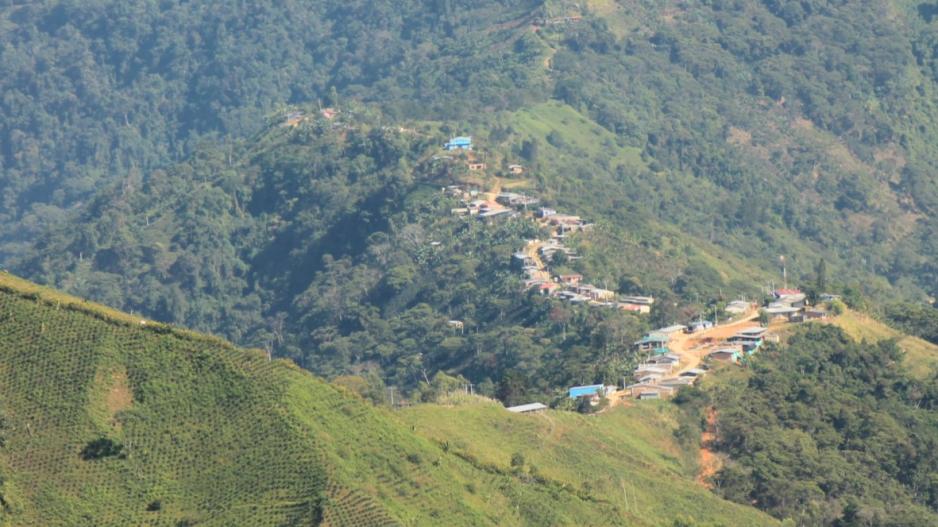
Miércoles 4 de noviembre de 2020, 10:00 am (Bogotá), Wednesday 4th November, 2020 4pm (Freiburg)
Este evento se llevará a cabo en español / This event will take place in Spanish.
Por favor, regístrese para participar al final de esta página. Antes de que comience el evento, recibirá el enlace de zoom del evento por correo electrónico.
Please register for participation at the bottom of this page. Before the event starts you will receive the zoom link to the event by e-mail.
_____________________
¿Por qué está resurgiendo una ola de violencia de tanta magnitud en el Caribe Colombiano?
Lo que se conoce como paramilitarismo en la Sierra Nevada ha marcado sus inicios de manera formal con la Bonanza Marimbera. En los años 90, el Estado Colombiano sintió que las guerrillas podían llegar al poder con el uso de las armas, y empiezan a surgir los grupos paramilitares con el apoyo del Estado para restarle fuerzas. Es entonces cuando organismo con el F2 y el DAS, ascienden de manera vertiginosa y al menos, en el Caribe Colombiano empiezan a jugar un papel determinante con apoyo logístico, inteligencia y acciones militares conjuntas.
También los años 90, más a mediados, el Caribe Colombiano fue epicentro de la segunda bonanza, esta vez, la cocalera que irrumpió con mucha violencia y fue, como en la primera bonanza, generadora de inimaginables recursos económicos.
La violencia (paramilitar y guerrillera) en el marco del conflicto armado, en el Caribe Colombiano y en Colombia, generalmente, se mide a partir de lo inductivo; es decir: de la forma como se usó también la memoría, el imaginario colectivo y la corporalidad a la hora de trasmitir un mensaje. Esto se convierte en un elemento de carácter definitivo para las víctimas: siempre van a vivir con esa imagen o el mensaje que recibieron a través de una acción violenta.
La persistencia de la violencia radica justamente en la capacidad que tuvieron para generar elementos asociados a la memoria de carácter definitivo. Pueden estar ausentes 10 años o más y al regresar todo va a volver a la etapa inicial. El Bloque Norte de las AUC desmovilizó más cinco mil personas (colectivas e individuales), pero nunca se fue el paramilitarismo del Caribe Colombiano, porque también en la memoria centralizada existe un desbalance que tiende a favorecer las omisiones del centralismo y sus delitos asociados.
- Dr. Lina Britto, Associate Professor, Department of History, Northwestern University.
- Lerber Dimas Vásquez, Profesor de Antropología de la Universidad de la Guajira e investigador del grupo Oraloteca de la Universidad del Magdalena.
- Dr. Francisco Gutiérrez Sanín, Profesor del Instituto de Estudios Políticos y Relaciones Internacionales (IEPRI) y director del Observatorio de Restitución y Regulación de los Derechos de Propiedad Agraria, Universidad Nacional de Colombia.
- Dr. Fabio Silva Vallejo, Director del grupo de investigación Oraloteca y Profesor de Antropología, Universidad del Magdalena.
- Modera: Dr. Alke Jenss, Investigadora y responsable del área Contested Governance, Arnold Bergstraesser Institute y Universidad de Friburgo.
____________________
Why is violence returning to the Colombian Caribbean with such force?
What is known as paramilitarism in the Sierra Nevada has marked its beginnings with the Marihuana boom of the 1970s. In the 1990s, the Colombian State felt that the guerrillas could come to power with the use of arms, and paramilitary groups began to emerge with the support of the State to lessen the guerrilla influence. It was then that, together with the F2 and the DAS, paramilitarism rose rapidly and, at least in the Colombian Caribbean, began to play a decisive role with logistical state support, intelligence and joint military actions.
The Colombian Caribbean was also the epicentre of the second illegal economy boom in the mid-1990s, this time the coca plantations burst onto the scene with much violence and, as in the first boom, generated unimaginable economic resources.
The (paramilitary and guerrilla) violence in the context of the armed conflict in the Colombian Caribbean and in Colombia generally used memory, the collective imagination and corporality when transmitting a message. This becomes a definitive element for the victims: they will always live with that image or the message they received through a violent action.
The persistence of violence lies precisely in the capacity they had to generate elements associated with memory of a definitive nature. They can be absent for 10 years or more, and when they return, their power returns. The Northern Bloc of the AUC demobilized more than five thousand people (collectively and individually), but the paramilitarism of the Colombian Caribbean never left, because there is also an imbalance in the centralized memory that tends to favor the omissions of centralism and its associated crimes.
- Dr. Lina Britto, Associate Professor, Department of History, Northwestern University.
- Lerber Dimas Vásquez, Professor of Anthropology at the Universidad de la Guajira and researcher of the Oraloteca group at the Universidad del Magdalena.
- Dr. Francisco Gutiérrez Sanín, Professor at the Institute for Political Science and International Relations, and director of the Monitoring Centre for the Restitution and Regulation of Agrarian Property Rights, Universidad Nacional de Colombia.
- Dr. Fabio Silva Vallejo, Director of the Oraloteca research group and Professor of Anthropology, Universidad del Magdalena.
- Moderator: Dr. Alke Jenss, Researcher and head of the research cluster Contested Governance, Arnold Bergstraesser Institute and University of Fribourg.
Coordinado por/organized by: Arnold Bergstraesser Institute (ABI), mit Unterstützung des/con el apoyo del Instituto Colombio-alemán para la Paz (CAPAZ)
